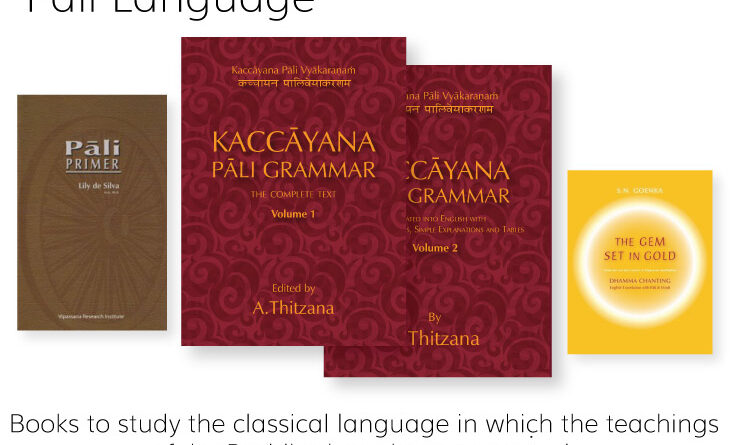Nội Dung Chính
Topic 1- Unit 1
Ariya Aṭṭhaṅgika Magga – The Noble Eightfold Path
Excerpt from S.N. Goenka’s Discourse
ariyo aṭṭhaṇgiko maggo — Maggo means path. Ariyo means noble. “Noble path”; noble path in the sense that anyone who walks on the path is bound to become a nobleperson … a saintly person, a good-hearted person, a pure-hearted person. That is why it is called the noble path, the Eightfold Noble Path.
sīla — Three parts of the path come in the division of morality, sīla: sammā-vācā, sammā-kammanta, sammā-ājīva. The word sammāmeans right.
- Sammā-vācā, right speech. You abstain from speaking lies, … words of back biting, … from speaking harsh words, words which hurt (or) do not help (others) in any way, because if you speak harsh words, it is unwholesome.
- Next is sammā-kammanta, wholesome physical action. The same yard stick applies: any action which hurts and harms other beings is unwholesome …. Don’t kill, don’t steal, don’t perform sexual misconduct, don’t take any kind of intoxicants. If you abstain from these, then all your physical actions auto-matically become wholesome. What remains is wholesome.
- Then sammā-ājīva, rightlivelihood. … a house holder is not supposed to go out with a begging bowl. One has to work to earn livelihood and workhard and work honestly, without harming others.
samādhi — mastery over the mind. Concentration of mind with the base of purity: this is samādhi. Another three parts of dhamma come under this division of samādhi: sammā-vāyāmo, sammā-sati, sammā-samādhi.
- Sammā-vāyāmo: right type of efforts, right type of exercises. In dhamma, every exercise is: examine yourself. The first exercise (and the last exercise) is, examine yourself. …
- Sammā-sati —the right type of awareness. What is the right type of awareness? The awareness of the reality of this moment, pertaining to your own physical and mental structure …. Awareness cannot be of the past. … Awareness cannot be of the future. …
- Now samādhi is concentration of the mind, but sammā-samādhi, is different, with a wholesome base. And what is this wholesome base? Free from moha: ignorance. No illusion, no delusion, no hallucination, no confusion and no imagination. The object of your concentration should be real.
paññā — experiential wisdom, insight which totally purifies the mind.
- sammā-saṅkappo — the right type of thoughts.
- sammā diṭṭhi — right understanding, right view. You can see things properly, as they are.
There are three stages — suta-mayā paññā, cintā-mayā paññā; bhāvanā-mayā paññā:
Suta-mayā paññā. You have heard something, you have read something: the wisdom of somebody else. The next step is cintā-mayā paññā, which means under standing the truth, developing wisdom at the intellectual level .. Bhāvanā-mayā paññā. Bhava — that is, to happen; to live the wisdom of your own experience, direct experience. You live this wisdom. … As long as you have not experienced the reality, it is no reality for you. It is always distorted.
Vocabulary List
Ariya Aṭṭhaṅgika Magga – Noble Eightfold Path
- sīla – morality, purity of action
- sammā-vācā – right speech
- sammā-kammanta – right action
- sammā-ājīva – right livelihood
- samādhi – concentration
- sammā-vāyāma – right effort
- sammā-sati – right awareness
- sammā-samādhi – right concentration
- paññā – wisdom
- sammā-saṅkappa – right thought
- sammā-diṭṭhi – right view
- suta-mayā paññā – wisdom from hearing
- cintā-mayā paññā – wisdom from intellectual understanding
- bhāvanā-mayā paññā – wisdom from experience
Pali WorkbookThe following items are lessons from the Pāli Workbook by Lynn Martineau
Click the word below to hear the pronunciation and use the arrows to go through the list of words.
Click and select from “Choose a Study Mode” in the lower right corner for more exercises.

-
-
Topic 3
The following items are adjuncts to the Pāli Workbook by Lynn Martineau and The Gem Set in Gold by S.N. Goenka. -
-
Topic 4
Vocabulary from Introduction to Pali by A.K. Warder
Find streaming audio files of Introduction to Pali online here.
-
-

